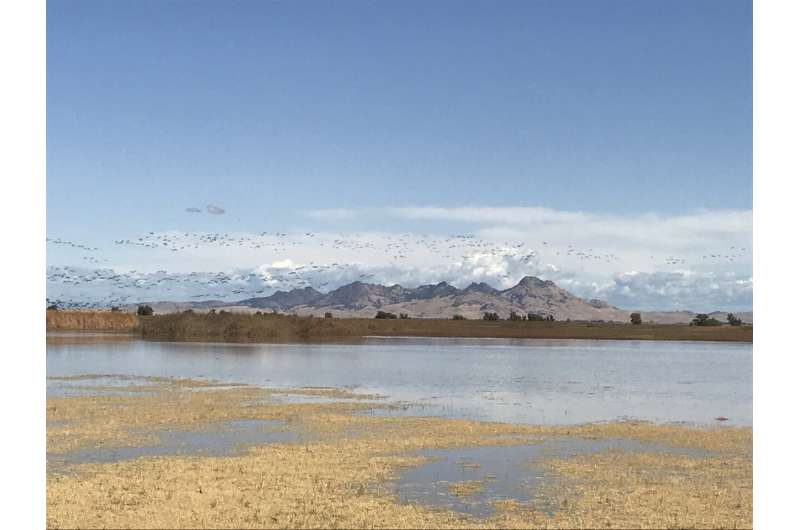This article has been reviewed according to Science X's editorial process and policies. Editors have highlighted the following attributes while ensuring the content's credibility:
fact-checked
peer-reviewed publication
proofread
Knowledge coproduction: Working together to solve a complex conservation problem

A new publication from a team of scientists at USGS, Point Blue Conservation Science, and Conservation Biology Institute shows how knowledge coproduction—the collaborative creation of actionable information by scientists, resource managers, and policy makers—can help identify viable conservation options for a dynamic ecosystem with a complex web of stressors. The study is published in the journal Conservation Biology.
The wetland habitats of California's Central Valley support millions of migratory birds each year and are an important part of the Pacific Flyway, a bird migration route that spans from South America to the Arctic Circle. There are less than 10% of historical wetlands remaining.
In this region where water is highly managed to serve multiple uses, resource managers must plan the complex and carefully-timed movements of water onto the landscape to create seasonal wetlands and associated food, made possible in part by the cooperation of farmers in the region, in anticipation of the needs of the migrating birds. Now enter climate change, which is ushering in an era of more extremes, and we have what is known as a "wicked" problem.
In such a situation it can seem impossible to know which actions are worthwhile to take, leading to decision paralysis or wasted efforts. Cooperation based on a shared understanding of the options is critical, and achieving those requires communication, buy-in, and trust.
To bring climate change into the picture, the team used future narratives describing four highly divergent climate change-environmental management scenarios that wetland managers could likely face, converted them into computer models that envision what happens when different actions are taken under the different scenarios. The scenarios as well as the design of the models were coproduced with the stakeholders, making it a transparent process for them as well as offering the opportunity for a wide range of expertise to be incorporated.
Representatives from the water management, planning, and conservation sectors were engaged throughout the four-year study, designed to investigate when and where management actions make a difference and when climate overrides these actions.
The study showed that actions to restore wetlands and prioritize their water supply created habitat outcomes resilient to climate change impacts particularly in March, when habitat was most limited, and that land protection combined with management can increase the ecosystem's resilience to climate change.
More information: Kristin B. Byrd et al, Knowledge coproduction on the impact of decisions for waterbird habitat in a changing climate, Conservation Biology (2023). DOI: 10.1111/cobi.14089
Journal information: Conservation Biology
Provided by Conservation Biology Institute





















